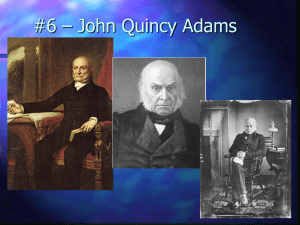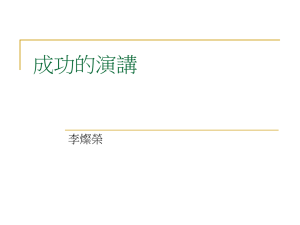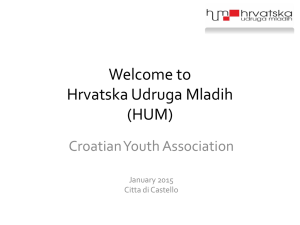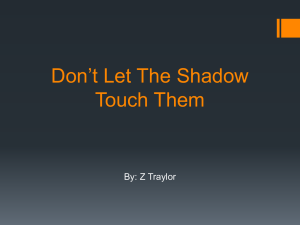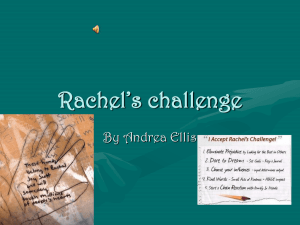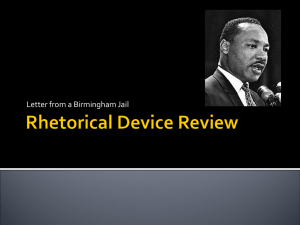Introduction to Truth-Functional/Propositional Logic: Deduction Part II
advertisement
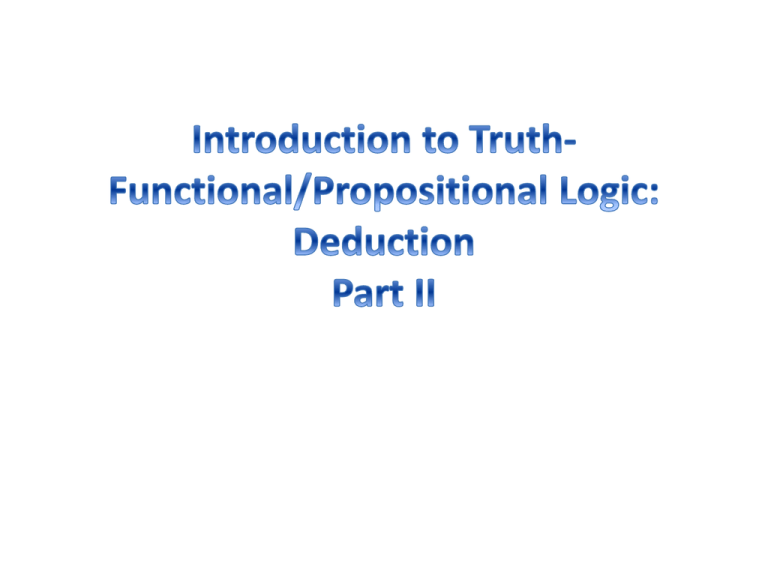
• • • • All are…. None are…. Some are…. Some are not…. All human beings are mortal. (All things identical with) LaRissa is a human being. Therefore, (all things identical with) Larissa is mortal All human beings are mortal. (All things identical with) LaRissa is a human being. Therefore, (all things identical with) LaRissa is mortal. All H are M. L is H. Therefore, L is M. • Contraposition (switch sub and pred terms & replace both with complementary terms): All things that are immortal are things unidentical with Larry. • Obversion (move horiz across square & replace pred term with complementary term): No things identical with Larry are things that are immortal. And then….. Therefore, (all things identical with) Larry is mortal • Conversion (switch position of sub and pred terms): No things that are immortal are things identical with Larry. Proposition is a statement with a truth value of true or false. Logic of sentences or propositions or claims (not categories). We are in HUM 106 at this moment. We are in HUM 106 at this moment, and we are smoking salmon. If we are in LRC 105, at this moment, then we are studying material related to PHIL 1. We are in HUM 106 at this moment (P). Equivalent to P. We are in HUM 106 at this moment (P), and we are smoking salmon (S). Equivalent to P & S. If we are in HUM 106 at this moment (P), then we are smoking salmon (S). Equivalent to P → S. Either we are in HUM 105 at this moment (Q), or we are in HUM 106 (P). Equivalent to P ˇ Q. We are in HUM 106 at this moment (P). P T F Negation (“it is not the case that”) symbolized by ~ Thus, ~P = “It is not the case that we are in HUM 106 at this moment.” P T F ~P F T P T F ~P F T To “interpret” the truth table is to add content. It is raining outside. Andy says he is feeling chipper today. Alyssa works at Ace Hardware. Creates a compound claim from two or more simpler claims. P T T F F And, while, but, even though, etc. We are in HUM 106 at this moment (P), and we are smoking salmon (S). P&S S T F T F Both conjuncts must be true for the claims to be true. P T T F F S T F T F P&S T F F F Also creates a compound claim from two or more simpler claims. P T T F F Or. Either we are in HUM 105 at this moment (Q), or we are in HUM 106 (P). PˇQ Q T F T F A disjunction is false if and only if both disjuncts are false. P Q T T F F T F T F PˇQ T T T F P T T F F “If….then…..” If we are in LRC 106 at this moment (P), then we are smoking salmon (S). P→S • P = the “antecedent.” • S = the “consequent.” S T F T F A conditional is false if and only if its antecedent is true and its consequent is false. P T T F F S T F T F P→S T F T T 1. If Quincy learns to symbolize, Paula will be amazed. 2. Paula will teach him if Quincy pays her a big fee. 3. Paula will teach him only if Quincy pays her a big fee. 4. Only in Paula helps him will Quincy pass the course. 5. Quincy will pass the course if and only if Paula helps him. 1. If Parsons signs the papers then Quincy will go to jail, and Rachel will file an appeal. 2. If Parsons signs the papers, then Quincy will go to jail and Rachel will file an appeal. 3. If Parsons signs the papers and Quincy goes to jail, then Rachel will file an appeal. 4. Parsons signs the papers and if Quincy goes to jail Rachel will file an appeal. 5. If Parsons signs the papers then if Quincy goes to jail Rachel will file an appeal. 6. If Parsons signs the papers Quincy goes to jail, and if Rachel files an appeal Quincy goes to jail. 7. Quincy goes to jail if either Parsons signs the papers or Rachel files an appeal. 8. Either Parsons signs the papers or, if Quincy goes to jail, then Rachel will file an appeal. 9. If either Parsons signs the papers or Quincy goes to jail then Rachel will file an appeal. 10. If Parsons signs the papers then either Quincy will go to jail or Rachel will file an appeal. If you have satisfactorily fulfilled the requirements described in the course syllabus, then you will earn a passing grade. What’s the symbolic expression? • P→S What’s the truth table for P and S? P S T T T F F T F F A conditional is false if and only if its antecedent is true and its consequent is false. So what’s the truth table for P → S? P T T F F S T F T F P→S T F T T P T T F F If scientist do not find a cure for baldness, John will always have a shiny head. ~P → S. To generate truth table, begin with simple claims. P=Scientists find a cure for baldness. S=John will always have a shiny head. S T F T F Now add ~P P T T F F S T F T F ~P Now apply the rule of conditionals to generate ~P → S: A conditional is false if and only its antecedent is true and its consequent is false. P T T F F S T F T F ~P F F T T ~P → S P T T F F S T F T F ~P F F T T ~P → S T T T F If the McKay tract is approved, then The truth table must list all the number of homeless camping in possible truth values for P, Q, the forest will increase and the natural and R. environment will be damaged. Building a truth table is • P → (Q & R) vs. (P → Q) & R getting tough! Simple claims: • P = The McKay tract is approved. • Q = The number of homeless camping in the forest will increase. • R = The natural environment will be damaged. Claims with 1 letter have two possible combinations of truth values. Claims with 2 letters have four possible combinations of truth values. So….every time we add a letter, the number of T and F combinations doubles and so, therefore, the number of rows in the truth table doubles. So….r = 2n Then, alternate T’s and F’s in the right-most row until you have the correct number of rows. Then, alternate pairs of T’s and F’s in the next row to the left. Then, alternate sets of four T’s and four F’s in the next row to the left, and so on and so on. The left-most row will always be half T’s and half F’s. If the McKay tract is approved, then the number of homeless camping in the forest will increase and the natural environment will be damaged. P → (Q & R) If r = 2n, then how many rows will the truth table have? 1st: Alternate T’s and F’s in the right-most row until you have the correct number of rows. P Q R T F T F T F T F Then, alternate pairs of T’s and F’s in the next row to the left. Then, alternate sets of four T’s and four F’s in the next row to the left, and so on and so on. P Q R T F T F T F T F Both conjuncts must be true for the claims to be true. P T T T T F F F F Q T T F F T T F F R T F T F T F T F Q&R P T T T T F F F F Q T T F F T T F F R T F T F T F T F Q & R• T F F F T F F F P T T T T F F F F Q T T F F T T F F R T F T F T F T F Q&R T F F F T F F F P → (Q&R) Now apply the rule of conditionals: A conditional is false if and only if its antecedent is true and its consequent is false. If the McKay tract is approved, then the number of homeless camping in the forest will increase and the natural environment will be damaged. P T T T T F F F F Q T T F F T T F F R T F T F T F T F Q&R T F F F T F F F P → (Q&R) T F F F T T T T Now apply the rule of conditionals: A conditional is false if and only its antecedent is true and its consequent is false. Generates all possible combinations of truth values for statements and combinations of statements. Allows you to test for validity with certainty. Validity: It is impossible for the conclusion to be false and premises to be true. An invalid argument is an illogical argument. An illogical argument is not a good argument. Use a truth table to determine the validity or invalidity of this argument: “If building the bookshelf requires a screwdriver then I will not be able to build it. After reading the directions I see that a screwdriver is needed. So, I can’t build it.” First, translate this argument into standard form Now into symbols If S then not B S _ Not B S → ~B S _ ~B 27 S → ~B S _ ~B Now, build a truth table. We have two claim variables, “S” and “~B” that each need a column. We need a column for each premise and the conclusion. S T T F F ~B T F T F S → ~B ~B 28 S → ~B S _ ~B Now, fill in the truth values for the first premise based on the rule of the conditional: A conditional is false if and only if its antecedent is true and its consequent is false. We’re done. Our truth table now tells us whether or not the argument is valid. What do you think? S T T F F ~B T F T F S → ~B T F T T 29
